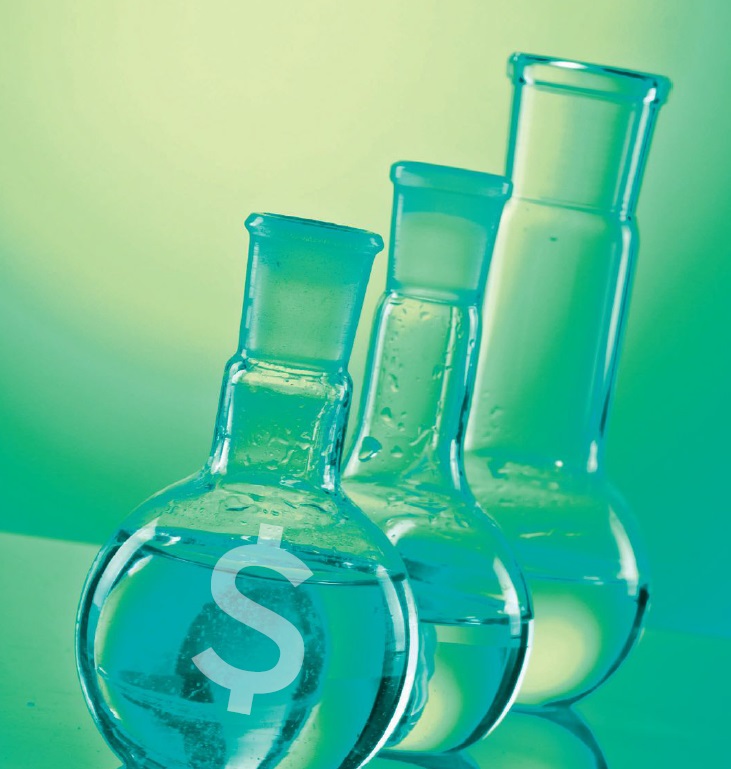Sustainable New Products
Dr. Robert M. Gresham, Contributing Editor | TLT Lubrication Fundamentals February 2013
In today’s resource-finite world, survival starts with innovation.
KEY CONCEPTS
•
As the world population grows, the notion of sustainability has taken on a new dimension.
•
Existing technologies can be improved through the use of constant innovation.
•
From a global perspective, green chemistry is inherently more profitable than non-green chemistry.
THERE MIGHT BE A PROBLEM with the phrasing of the above headline. Maybe it should be New Products for Sustainability.
As a society, we are not sustainable without the new products and technologies that allow us to grow and prosper. From the earliest tribes to the present, those peoples able to innovate survived or, in today’s parlance, were sustainable. They discovered sources of energy beyond their own physical strength such as fire, wood, slaves (sadly, someone else’s physical strength), hydro, coal, natural gas, nuclear and wind. They began with hunting and gathering and then learned animal husbandry and farming. All these activities led to sustainability of various social groups.
That was then. As today’s world population grows, the notion of sustainability has taken on a new dimension. We have finite global resources, so the big question is how (and how well) are we managing them? A big part of that management involves the development of new products and technologies—not just more laws and regulations.
So let’s take a closer look.
SUSTAINABILITY
At its most fundamental level, sustainability is “living to live off the sun in real-time.” Think about it—the sun is our ultimate source of energy. Living in real-time is using that energy immediately for what you need, thus coal is fossilized energy. Crude oil is much the same. The food we eat (energy) again is derived from the sun. But all these sources involve time and some level of waste and inefficiency. So the goal of real-time is to live off the sun with maximum efficiency. In doing so, ideally we could survive as long as the sun does. Another way to look at sustainability is meeting the needs of the present without adversely affecting the future. This introduces the concept of renewability.
In his book
Collapse: How Societies Choose to Fail or Succeed, Jared Diamond provides examples of how civilizations living in totally isolated places survive or don’t according to their cultures and the choices they make regarding the resources available to them in their isolated worlds. Examples included various island cultures in the South Pacific such as Easter Island. These people are, in their microcosms, dealing with the concept of sustainability.
Sustainability really deals with resource management, and those resources ultimately come from the sun in the form of energy. We use energy for lighting and heating, mobility and for manufacturing goods and services. So how do we become a sustainable society? Through innovation—new products and technologies. And that’s something a techie like me can get excited about.
Through innovation we must improve on our existing technologies, look for ways to reduce waste and recycle through green chemistry. Those first two goals, if you want to be sustainable, are fairly self-evident. Less obvious are the logistics of green chemistry, which I’d like to discuss since it speaks to my technical roots as an organic chemist.
According to Dr. Richard Engler, head of the U.S. EPA’s green chemistry initiative, all green chemistry must include economic reality. That allows us to drop the more far-fetched ideas and start thinking straight.
The concept of green chemistry must involve global cost-competitiveness. Global here means not only geographically but also from a total systems perspective. Green chemistry is a philosophical approach to chemistry whereby the design of new chemical products and processes reduce or eliminate the use or generation of hazardous substances.
There are often various synthetic pathways in organic chemistry, leading to a given final product. The new way of thinking is not just about how elegantly I make some material but, rather, which of the possible syntheses utilize a greener pathway, use greener reagents and solvents, involve greener intermediates and end-products and which syntheses are inherently safer and use more waste-free chemistry.
 All green chemistry must include economic reality.
All green chemistry must include economic reality.
www.canstockphoto.com
Green chemistry also charges us to ask such questions as: How can I use the fewest number of atoms to make the final product? How can I maximize the number of these atoms that end up in the final product? Can I use a catalyst (which can be reused) rather than a stoichiometric reagent (which is consumed)?
Global thinking about green chemistry involves not only the costs of chemicals, solvents, reagents and energy to perform the synthesis but also the pollution-treatment costs along the synthesis pathway and, of course, any special handling or packaging needed because of inherent hazards in the product or regulatory-compliance costs.
From a global perspective, green chemistry is inherently more profitable than non-green chemistry. If it is more profitable, it will ultimately survive in the marketplace where its less-green competitor will not. This is what sustainability is all about in the world of chemistry.
STLE President Jerry Byers, Cimcool Fluid Technologies, recently gave a presentation at the Tribology Society of India’s 8th International Conference on Industrial Tribology and observed some interesting and compelling examples.
For example, Coldwater Creek, a women’s apparel retailer, uses only green-energy sources for its headquarters, distribution and customer contact centers. Retail stores for the U.S. Tire Discounters, an automotive service company, feature lifetime tire balancing, fuel-efficient tires, nitrogen-tire inflation, recycled oil from Valvoline (50% recycled, yet meeting its specifications) and zinc-wheel weights.
NSK Bearings recycled used bearings at a rate of 99.3% in Japan and 92.3% elsewhere—reducing its landfill by half. It also installed reverse osmosis rather than deionization in its water systems, used sensors to turn off lights in no-activity areas and reduced 75% of its compressed air usage by eliminating oil-mist lubrication. General Motors reduced energy and carbon intensity at its facilities by 20% and total waste by 10% (landfill-free) at 100 manufacturing sites and 25 non-manufacturing sites. GM also reduced the weight of its cars since 10% weight loss yields 6%-8% in fuel savings.
These are only a few examples where companies have made a significant impact on sustainability goals through the use of new products, technologies and services. Despite the media’s constant castigation of evil corporations, many businesses have, through constant innovation, created more of the science that helps us live off the sun in real-time.
Nonetheless, I’m still not sure what the title of this article should be.
 Bob Gresham is STLE’s director of professional development. You can reach him at rgresham@stle.org
Bob Gresham is STLE’s director of professional development. You can reach him at rgresham@stle.org.